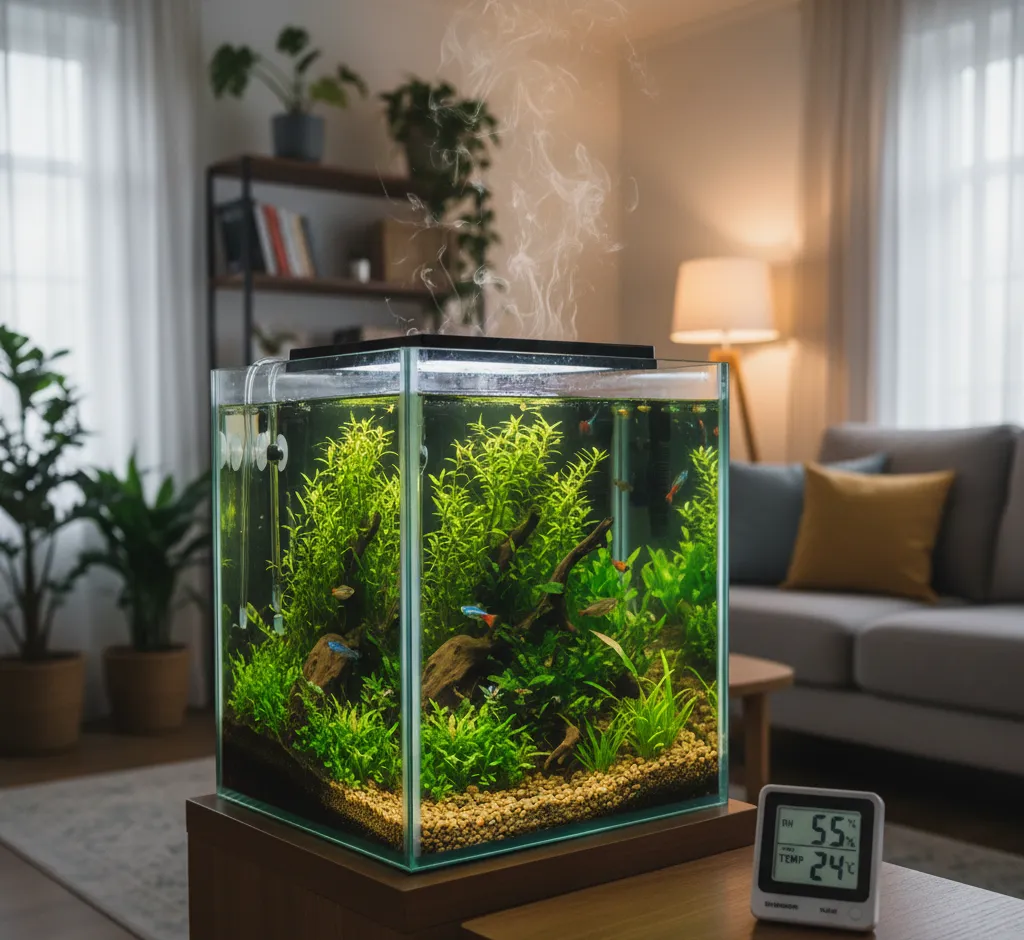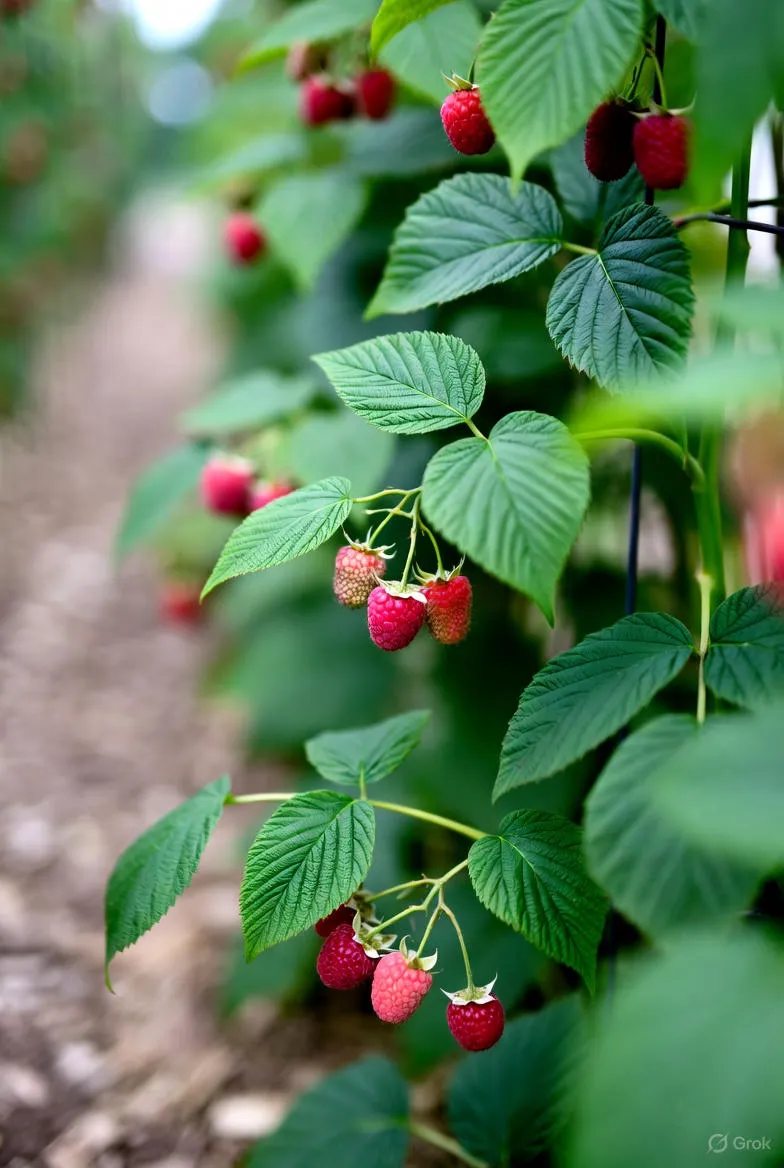The Aquatic Oasis: Naturally Humidifying Your Home with an Aquarium
Discover how a simple home aquarium can naturally and efficiently humidify your rooms, maintaining optimal air quality (40-60% RH) without the hassle of electric humidifiers. Learn the science, ideal setup (tank size, open-top design), and maintenance tips for using your aquatic hobby as a beautiful, functional humidifier.

The Aquatic Oasis: Naturally Humidifying Your Home with an Aquarium
In the quest for optimal indoor air quality and comfort, many homeowners turn to electric humidifiers. While effective, these devices require regular maintenance, energy consumption, and often the use of distilled water to prevent mineral buildup. However, a more serene, aesthetically pleasing, and remarkably effective solution is swimming right under our noses: the **home aquarium**.
An aquarium is not just a stunning piece of living decor; it's a naturally occurring, highly efficient evaporative humidifier. This article will dive deep into the science, setup, practical considerations, and long-term benefits of leveraging your aquatic hobby to maintain a balanced and healthy humidity level in your living space. We will explore how to maximize this effect, what size tank is ideal, and how to integrate this natural process seamlessly into your home environment.
Understanding the Science: How an Aquarium Adds Humidity
The core principle behind an aquarium's humidifying power is simple: **evaporation**. The surface of the water, constantly exposed to the room's air, naturally transitions from a liquid to a gaseous state (water vapor). This process is accelerated by several factors inherent to the aquarium environment:
- Large Surface Area: Unlike a small container of water, a standard aquarium presents a significant surface area from which water can evaporate. The larger the tank's top opening, the greater the rate of vapor release.
- Heat: Most tropical aquariums require a heater to maintain a stable temperature, typically between $75^{\circ}\text{F}$ and $82^{\circ}\text{F}$ ($24^{\circ}\text{C}$ and $28^{\circ}\text{C}$). This warming of the water drastically increases the rate of evaporation, as warmer water molecules have more kinetic energy, making it easier for them to escape into the air.
- Water Movement: Filtration and aeration systems (pumps, air stones) cause the water's surface to ripple or splash, constantly exposing new water molecules to the air and further accelerating the evaporative process.
- Open-Top Design: Tanks with minimal or no lids allow the maximum amount of water vapor to escape directly into the room. This is the single most controllable factor for maximizing humidification.
The resulting water vapor is clean and pure, as the process of evaporation leaves behind any dissolved minerals, salts, and impurities in the tank water. This means no 'white dust'—a common issue with ultrasonic humidifiers—and a very clean form of humidification.
The Ideal Aquarium Setup for Humidification
To use an aquarium effectively as a humidifier, specific choices in tank size, placement, and equipment must be made:
1. Tank Size and Surface Area
The key metric is **surface area**, not volume. A long, shallow tank (like a 40-gallon breeder tank) will humidify a room more efficiently than a tall, slender tank of the same volume. A common recommendation for noticeable humidification in an average-sized room (e.g., 200–300 square feet) is a tank of **50 gallons or larger**.
- 20-30 Gallons: Suitable for small bedrooms or offices.
- 50-75 Gallons: Effective for average-sized living rooms or master bedrooms.
- 100+ Gallons: Ideal for open-plan living spaces or homes in extremely arid climates.
2. Lid or No Lid? Maximizing Evaporation
For maximum humidification, the aquarium should be run **without a traditional, tight-fitting lid**. Instead, consider a mesh screen or a partially open glass canopy. The purpose of the mesh is twofold: to allow free movement of water vapor and to prevent fish from jumping out. A completely open top is ideal for evaporation but comes with risks for the livestock and higher water top-offs.
3. Water Temperature and Heating
Tropical setups are vastly more effective than cold-water (e.g., Goldfish) tanks. Maintain a stable water temperature between $75^{\circ}\text{F}$ and $80^{\circ}\text{F}$. The slight energy cost of the heater is often comparable to or less than running a dedicated electric humidifier, but with the added benefit of a beautiful display.
4. The Role of Air Flow
Ensure the tank is placed where air can circulate freely above the surface. Do not place it in a tight alcove or directly beneath a low shelf, as this will trap the humid air above the tank and reduce the rate of evaporation into the larger room.
Practical Benefits: More Than Just Moisture
Utilizing an aquarium for humidification offers holistic benefits that surpass simple mechanical devices:
- Relief from Dry Air Symptoms: Maintaining the ideal relative humidity (RH) of 40–60% helps alleviate dry skin, irritated throats, sinus congestion, and chapped lips, common in dry winter months.
- Reduced Viral Spread: Studies suggest that maintaining humidity within the optimal range can significantly reduce the viability of airborne viruses.
- Improved Sleep Quality: Adequate humidity can reduce snoring and morning throat dryness.
- Preservation of Wood and Art: Dry air can cause wooden furniture, flooring, and musical instruments (e.g., pianos, guitars) to crack, warp, or shrink. Balanced humidity protects these investments.
- Static Electricity Reduction: Higher humidity levels naturally reduce static cling and electric shocks.
- Biophilic Connection: The presence of a living ecosystem promotes relaxation, reduces stress, and is a significant aesthetic upgrade over a utilitarian plastic humidifier.
- Sound Therapy: The gentle gurgling and bubbling of the filter and air stone can provide soothing white noise.
Monitoring and Maintenance: Integrating the Two Hobbies
Combining the role of a pet habitat and a climate control device requires diligent monitoring. The hobbyist must now monitor two key parameters: **aquarium water parameters** and **room relative humidity (RH)**.
Monitoring Relative Humidity (RH)
A simple, accurate **hygrometer** placed across the room from the tank is essential. The goal is to keep the room's RH between **40% and 60%**. If the RH consistently exceeds 60%, there is a risk of mold, mildew, and condensation, particularly on windows and exterior walls. If this happens, a glass canopy should be partially or fully closed to reduce the evaporation rate.
Water Top-Offs: The Necessary Chore
Due to the aggressive evaporation rate required for effective humidification, expect to top off the tank with water frequently—perhaps daily or every few days, depending on the tank size and room dryness. It is critical to use **purified water (RO/DI or distilled)** for top-offs to prevent the buildup of minerals (TDS, or Total Dissolved Solids) in the tank, which could be harmful to the fish over time. Regular water changes (usually 25% weekly) must still be performed to remove nitrates and other toxins.
Note on Salinity (Saltwater Tanks): For saltwater (marine) aquariums, only **freshwater** (purified) evaporates. The salt does not. Therefore, top-off water must *always* be pure freshwater to maintain the correct, stable salinity ($1.025 \text{ S.G.}$) crucial for the survival of marine life. A common tool for marine hobbyists is an **Auto Top-Off (ATO) system**, which automatically replenishes evaporated water and is highly recommended when using a saltwater tank for humidification.
Addressing Potential Drawbacks and Considerations
While an excellent natural solution, using an aquarium for humidification is not without its limitations:
- Overshoot Risk: In smaller, poorly ventilated rooms, especially during warm weather, a large, open-top aquarium can easily drive the humidity above the recommended 60% threshold, risking mold. **Ventilation and monitoring are key.**
- Energy Consumption: A large, heated aquarium consumes more energy than a small, unheated one, which must be factored into the overall cost-benefit analysis.
- Increased Maintenance: The need for frequent top-offs and the increased risk of algae (due to light and warmth) means the owner must be dedicated to aquarium maintenance.
- Placement Limitations: The aquarium must be placed away from direct sunlight (to prevent excess algae and heat swings) and away from electrical sockets that could be damaged by condensation.
A Synergistic Solution for the Modern Home
In conclusion, a thoughtfully designed and properly maintained aquarium offers a superior, multi-functional approach to indoor air quality. It is a harmonious marriage of hobby and home science, transforming a simple piece of decor into a highly effective, natural, and low-maintenance climate control system. By understanding the principles of evaporation, prioritizing surface area and an open-top design, and maintaining consistent monitoring, you can turn your aquatic oasis into a healthier, more comfortable living environment for both your family and your aquatic pets. The aquarium is, quite literally, a breath of fresh, moist air.
Consider the investment not just in a pet, but in a functional, beautiful, and silent humidifier that adds life, beauty, and health benefits to your home year-round.


